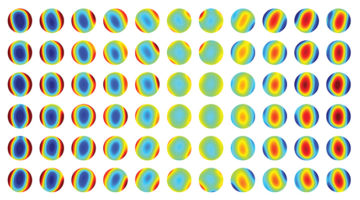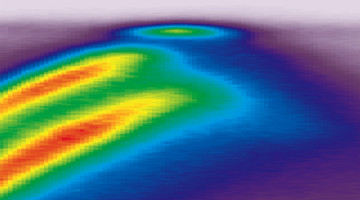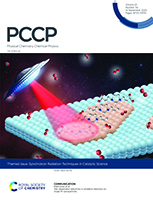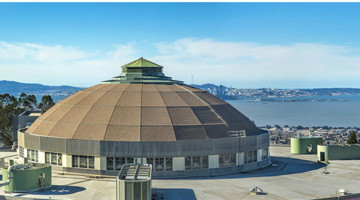Researchers developed an in situ computational technique for measuring aberrations in EUV optics, taking advantage of the surface roughness of photomasks used to transfer circuit patterns onto chips. The technique will prove increasingly valuable in the characterization of coherent light sources and beamline optical systems. Read more »
All News & Updates
The Flat Band in Magic-Angle Graphene Visualized
Researchers visualized flat band structures associated with exotic electronic phases in stacked graphene layers offset from each other by a “magic angle.” The work corroborates theoretical predictions and has significant implications for phenomena of technological and fundamental interest, such as topological phases and superconductivity. Read more »![]()
![]()
Site-dependent selectivity in oxidation reactions on single Pt nanoparticles
Heterogeneous catalysis is a surface-controlled phenomenon in which different surface sites often show variations in reactivity, posing a major complication for the chemical industry. Here, site-dependent selectivity in oxidation reactions on Pt nanoparticles was identified by conducting IR nanospectroscopy measurements while using allyl-functionalized N-heterocyclic carbenes (allyl-NHCs) as probe molecules. Read more »
Eric Gullikson Receives 2020 Klaus Halbach Award
When Eric Gullikson first arrived at Berkeley Lab, the Advanced Light Source (ALS) did not yet exist. Thanks to his work, not only has the ALS grown in scale, capability, and renown, but other light sources worldwide have benefited as well. The ALS Users’ Executive Committee recognized Gullikson, staff scientist, for “contributions to x-ray metrology that are central to building beamlines at the ALS and around the world.” Read more »
Tom Scarvie Receives 2020 Renner User Services Award
At this year’s ALS User Meeting, Tom Scarvie, head of the ALS Operations Group, was honored with the 2020 Renner Award. The ALS Users’ Executive Committee selected Scarvie “for coordinating all accelerator and beamline floor operator activities to provide reliable light to users safely.” Read more »
Missing Lysine Link Could Improve Plant-Based Nutrition
To engineer crops with higher levels of the important amino acid, lysine, researchers solved the structure of an enzyme that helps break down lysine in plants. A fuller understanding of the factors affecting lysine levels should aid in the successful development of stable high-lysine crops to combat malnutrition globally. Read more »
2020 ALS User Meeting Highlights
An experiment born of necessity, the 2020 ALS User Meeting was held August 25–28, “in silico.” The results have been generally positive, revealing emergent benefits to interactions occurring in the virtual realm, even as we hope for a return to real space ASAP. Read more »
Small but Still Mighty: Ultrafine Grains Produce Ultrastrong Metals
Researchers used in situ high-pressure diffraction to resolve a debate about whether a metal’s strength increases or decreases when its grain size decreases below a critical point. The results indicate that ultrastrong metals for future applications can indeed be achieved through grain-size refinement and grain-boundary engineering. Read more »
How Proteins Remodel DNA in Bacteria under Stress
Multiscale, multimodal visualization techniques at the ALS enabled researchers to clarify how proteins remodel bacterial DNA in response to stressful environments. The discovery could lead to new strategies for controlling microbial behavior and, eventually, new ways to fight bacterial infections. Read more »![]()
![]()
Toughening Mechanisms in Carp Scales at the Nanoscale
Scientists have characterized carp scales down to the nanoscale, using the ALS to watch how the fibers in the scales react as stress is applied. The resulting insights provide inspiration for the design of advanced synthetic structural materials with unprecedented toughness and penetration resistance. Read more »![]()
![]()
- « Previous Page
- 1
- …
- 61
- 62
- 63
- 64
- 65
- …
- 138
- Next Page »









